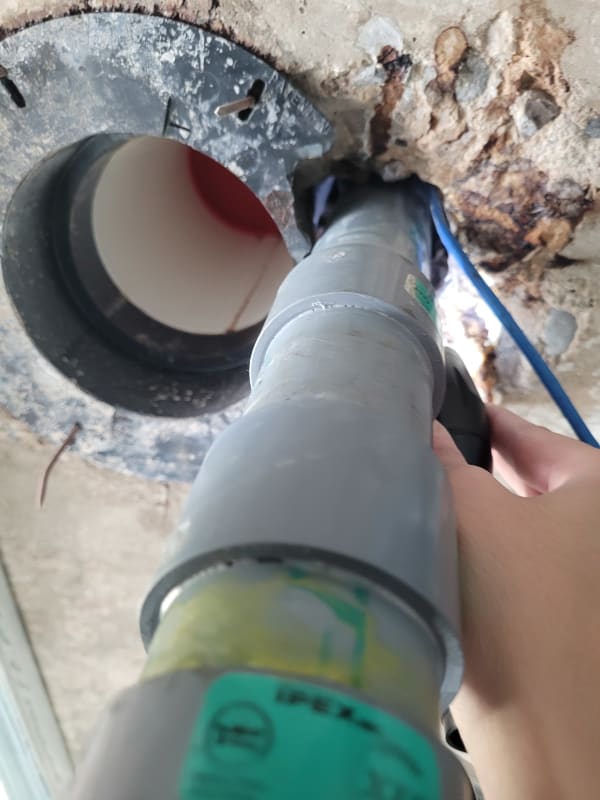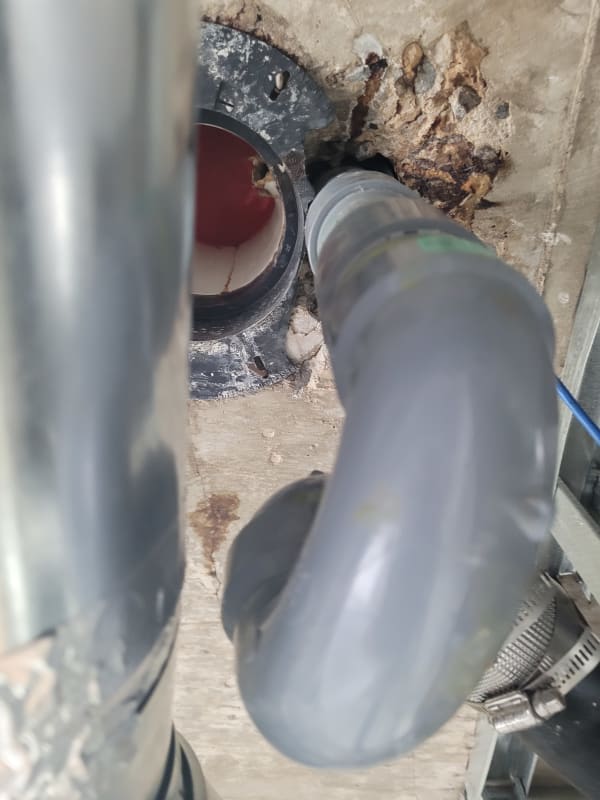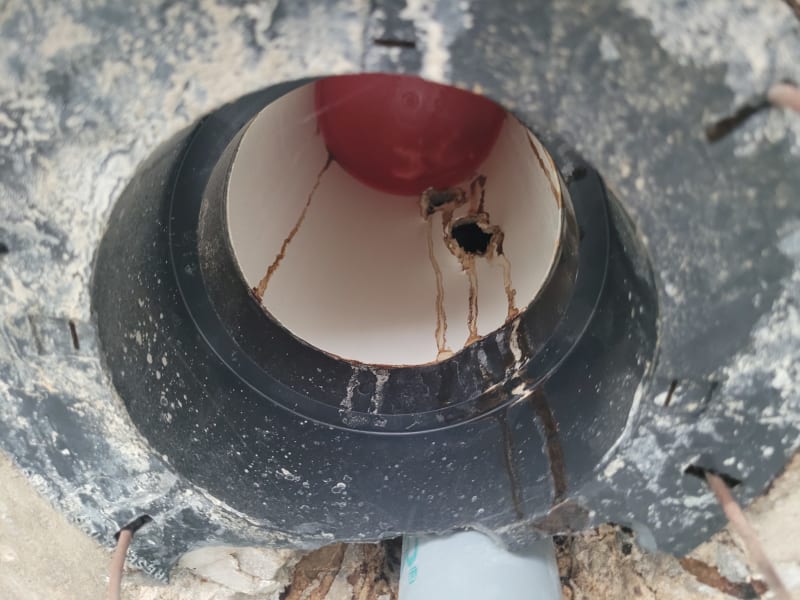Hi,
I am seeing this in a residential condo unit and the pvc pipe is coming from the unit above and into the unit below through the concrete ceiling. It doesn't look right at all but I'm an electrical engineer and I'm looking for some info with someone who knows the fire code/plumbing better as to whether or not this is fireproofed properly and/or what fireproofing would be required to bring this to code? The blue cable is a network cable which also isn't installed properly.
Thanks.



I am seeing this in a residential condo unit and the pvc pipe is coming from the unit above and into the unit below through the concrete ceiling. It doesn't look right at all but I'm an electrical engineer and I'm looking for some info with someone who knows the fire code/plumbing better as to whether or not this is fireproofed properly and/or what fireproofing would be required to bring this to code? The blue cable is a network cable which also isn't installed properly.
Thanks.



